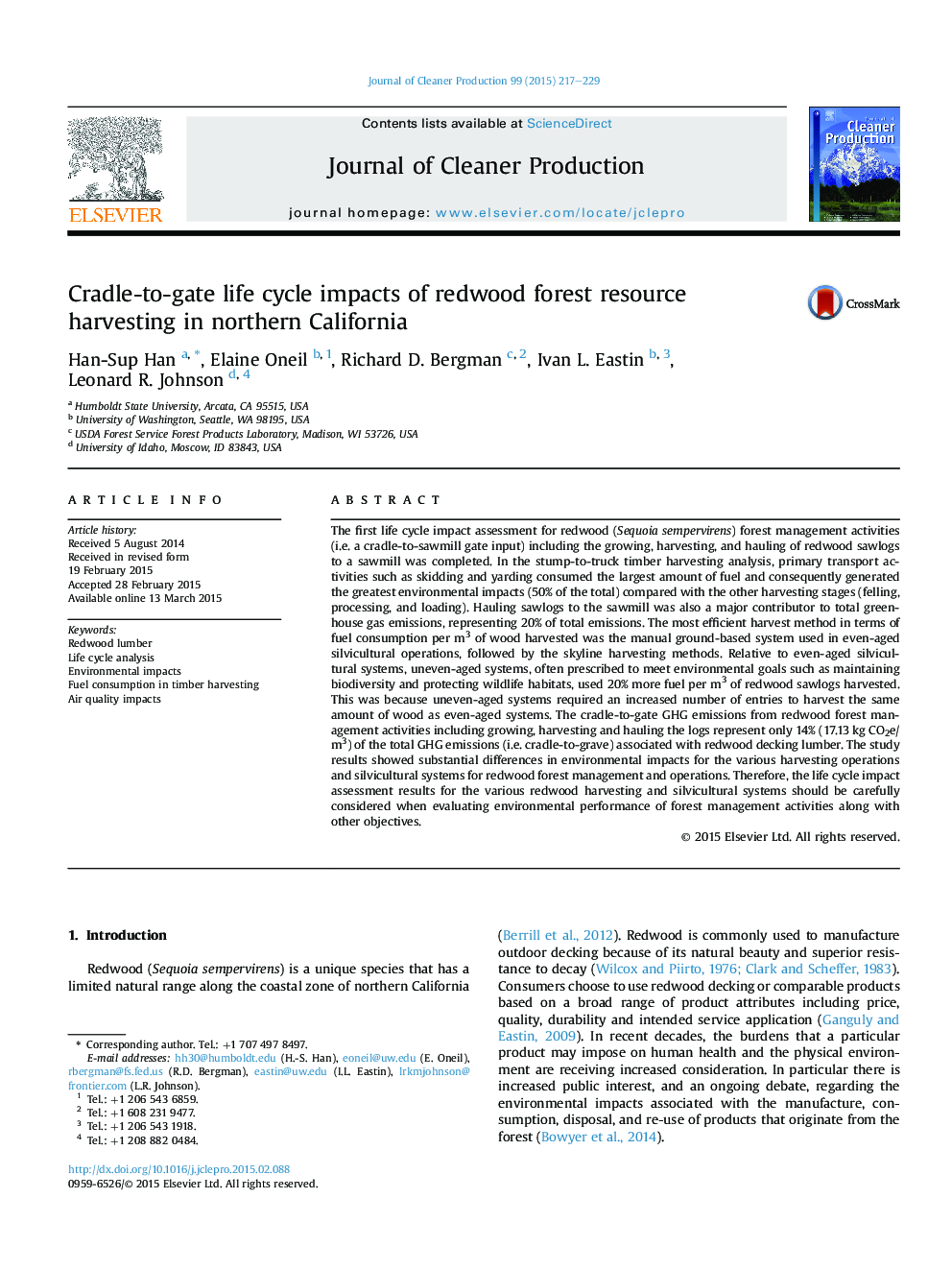| Article ID | Journal | Published Year | Pages | File Type |
|---|---|---|---|---|
| 8104103 | Journal of Cleaner Production | 2015 | 13 Pages |
Abstract
The first life cycle impact assessment for redwood (Sequoia sempervirens) forest management activities (i.e. a cradle-to-sawmill gate input) including the growing, harvesting, and hauling of redwood sawlogs to a sawmill was completed. In the stump-to-truck timber harvesting analysis, primary transport activities such as skidding and yarding consumed the largest amount of fuel and consequently generated the greatest environmental impacts (50% of the total) compared with the other harvesting stages (felling, processing, and loading). Hauling sawlogs to the sawmill was also a major contributor to total greenhouse gas emissions, representing 20% of total emissions. The most efficient harvest method in terms of fuel consumption per m3 of wood harvested was the manual ground-based system used in even-aged silvicultural operations, followed by the skyline harvesting methods. Relative to even-aged silvicultural systems, uneven-aged systems, often prescribed to meet environmental goals such as maintaining biodiversity and protecting wildlife habitats, used 20% more fuel per m3 of redwood sawlogs harvested. This was because uneven-aged systems required an increased number of entries to harvest the same amount of wood as even-aged systems. The cradle-to-gate GHG emissions from redwood forest management activities including growing, harvesting and hauling the logs represent only 14% (17.13 kg CO2e/m3) of the total GHG emissions (i.e. cradle-to-grave) associated with redwood decking lumber. The study results showed substantial differences in environmental impacts for the various harvesting operations and silvicultural systems for redwood forest management and operations. Therefore, the life cycle impact assessment results for the various redwood harvesting and silvicultural systems should be carefully considered when evaluating environmental performance of forest management activities along with other objectives.
Related Topics
Physical Sciences and Engineering
Energy
Renewable Energy, Sustainability and the Environment
Authors
Han-Sup Han, Elaine Oneil, Richard D. Bergman, Ivan L. Eastin, Leonard R. Johnson,
